Humphrey Munson design and make beautiful handmade kitchens just a stones throw from us in Felsted, Essex. With a rich heritage of British craftsmanship and design behind them, their work embodies timeless elegance and impeccable attention to detail.
We caught up with Creative Director, Louisa, to talk about her journey into design, the guiding principles behind Humphrey Munson's signature look, and her expert advice for anyone embarking on a bespoke kitchen project.
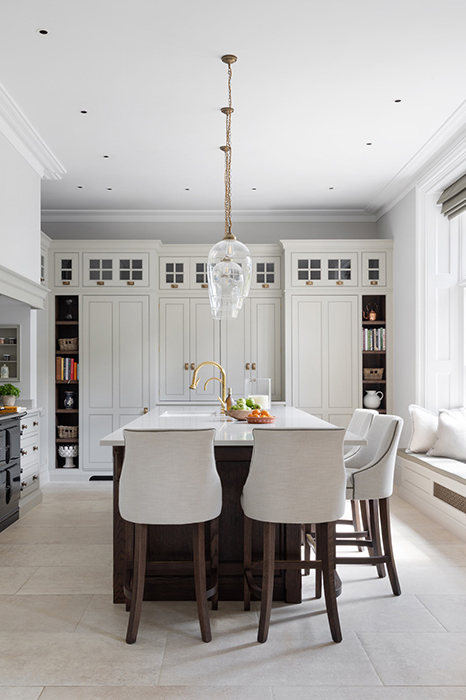
Thank you for joining us on the Style Journal, Louisa. To begin, could you tell us a little about your role at Humphrey Munson?
Hello, thank you for having me on the Style Journal. My role at HM is Creative Director, and in a nutshell, I align the creative vision of the business with the overall business strategy, so I oversee the design team and client services team as well as the brand strategy and marketing, including showroom presentation and experience, PR, social media and brand partnerships.
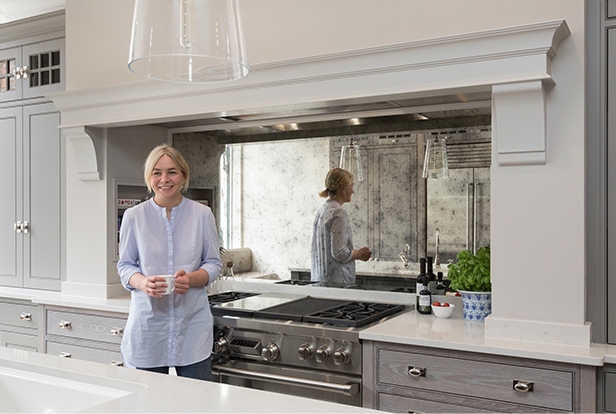
How did you get started in the industry? It was a bit of a peculiar route in some ways as I initially trained as a solicitor and worked in London. After 7 years (classic itch) I wanted a change and re-trained in furniture restoration and interior design, and the company I ran had a really popular blog which got me into marketing/branding.
When I came to HM, the focus for me was on defining and growing the brand - this was around 11 years ago. I honestly think you can do anything you put your mind to and so many of the fabulous interior designers we now work with at HM have had previous careers in completely different fields. I think a good, pragmatic head for business is essential for project design work.
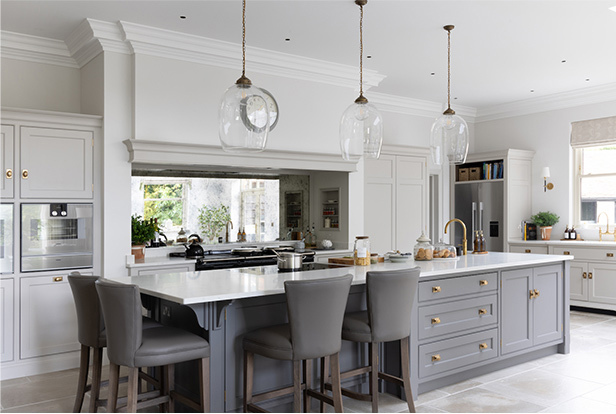
What does a typical day look like for you? A completely predictable answer of course - there isn’t one, which is what I love so much about this role. Some days I’ll be working with our design and client services team or meeting with clients and suppliers, magazines etc, and other days I’ll be on a shoot at a finished project styling and overseeing photography. I do a few days in the London showroom each week which i love as it’s so buzzy and such a great space to share with our clients, interior designers and architects.
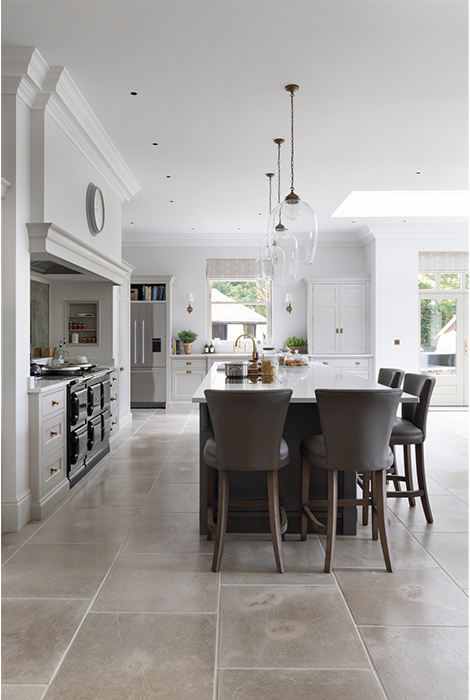
What guiding philosophy underpins your work, are there specific principles you return to time and again?
Symmetry, proportion and simplicity. We always come back to the idea that a Humphrey Munson kitchen is built to last, both in quality and in style. Future proofing is key. We really don’t like trends in interior design, a classic home should look as good in 5 years, 10 years etc, as the day it is finished.
Humphrey Munson designs, like ours, are proudly handcrafted in the East of England. In what ways does the heritage of the brand influence the way you design today?
Our heritage is central to everything we do. Peter Humphrey founded the company in 1995, honouring his great-great grandfather, Joseph Munson, a master cabinetmaker in London’s East End. That legacy of craftsmanship, paired with Peter’s exacting standards, continues to guide us today. I think making everything by hand is really special, and Peter has instilled in the company a constant drive to improve, ensuring every design reflects both our history and our commitment to excellence.
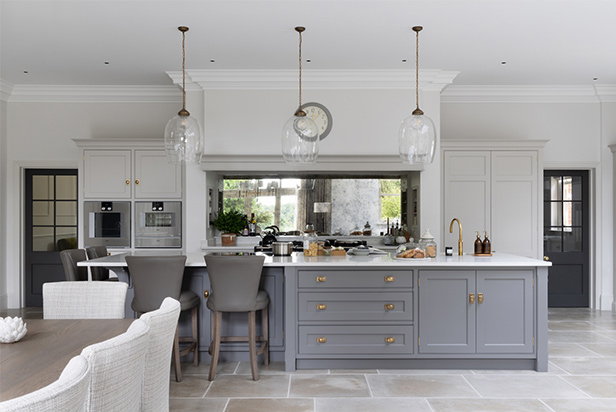
We know you love to feature Jim Lawrence in your projects, but when it comes to sourcing materials and accessories, where do you begin? How do you balance the client’s brief with staying true to the ‘Humphrey Munson’ look? We always source from our very talented and trusted suppliers and will always prioritise British made materials and accessories where possible. We have to know that the elements of the project outside of our direct control are the same standard / quality that our clients know and expect from Humphrey Munson furniture so it’s very important that we use suppliers whose ethos aligns with ours.
In terms of balancing the client brief and staying true to the HM look, it is really about creating a bespoke and personal design for that client - not a cookie cutter replica. The HM look will always be present because of the design restraint and approach we take - clients come to use because they trust us to give the project creative direction and day-to-day functionality, sometimes that means saying “no that won’t work, what about this?”
When you’re doing a project you don’t want to be surrounded by ‘yes people’ who just agree with everything you say, you want to be surrounded by people who understand the brief, are experts in their field and know how to deliver an outstanding project.
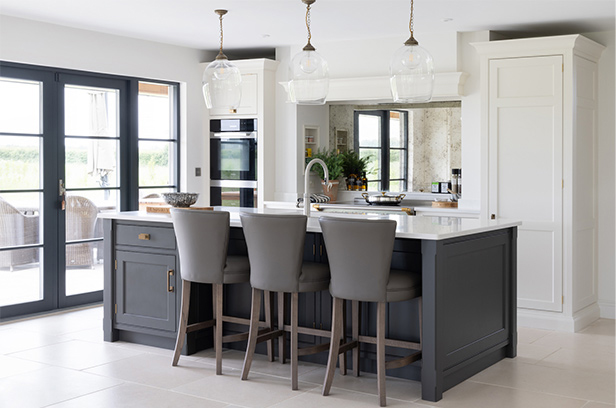
Can you highlight one recent project that has stuck with you? What made it so special?
We’re lucky we have so many incredible and noteworthy projects, but the Victorian Rectory comes to mind immediately because of our brilliant clients who bought this real unicorn of a house; it is so special and it was a privilege to be part of it.
We had a really good time with them during the design phase, meetings were super collaborative and they were really considered in their choices, always keeping in mind this underlying sympathy to the heritage of the house but still sneaking in all the modern conveniences we just love at HM. As well as the kitchen, pantry and dining room we also did the overall interior design and the end result is just perfect on so many levels.
What advice would you give someone investing in a bespoke kitchen for the first time?
It’s a long-term view, so take your time and understand that good work takes time - both building work to get a room ready, the cabinetmaking process and then the installation itself. When it comes to designing it, to be honest, a bespoke kitchen is easier to design than a modular one because anything is theoretically possible.
Be honest about how you live, cook and entertain. Flow and space are important, and we know that a well designed kitchen that works, will always work. Don’t try to fit every idea you see in it, and avoid gadgets and gimmicks.
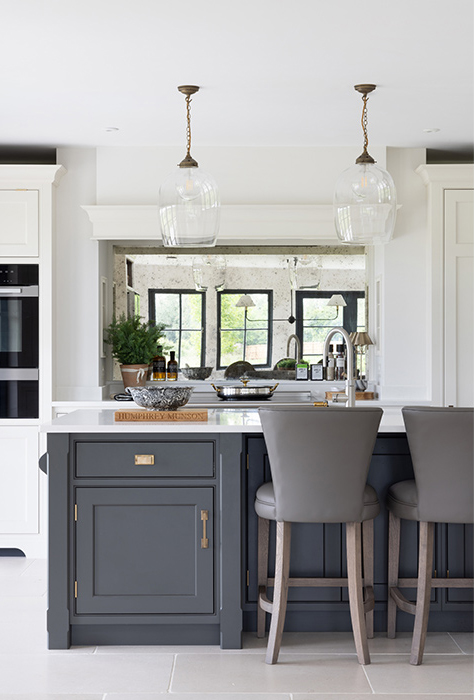
Is there one commonly overlooked (but essential!) element people tend to forget when planning a kitchen renovation?
I often find that lighting design is missed off and there can be an assumption that the builder will take care of it, or that we will. As cabinetmakers, we do the lighting if it’s in or on cabinetry, and we supply decorative wall and pendant lighting for projects. But it’s often the last thing on the list and you don’t want a grid on your ceiling with 50 spotlights that make your kitchen feel like an operating theatre.
You also don’t want the friend who did an interior design course 5 years ago doing your lighting design as the technology is always changing. I think most of us know good lighting when we see it, and we know bad lighting too. Always use a lighting designer is my best advice. If I was doing a new kitchen project I would appoint the team in this order - architect, kitchen designer, lighting designer, then contractor.
What’s your most frequently shared tip when it comes to kitchen lighting?
Task lighting is the most important element to get right, but layering is key as the kitchen is now really the main living space (whether you like to cook or not). Always use directional fixtures set in line with the cabinetry for shadow-free working light. And really guard against over lighting the room - you need less light than you actually think you do. Every light fixture in the kitchen (or any room) should have a purpose, if it does not have one, the room does not need it.
Finally, some quick fire questions:
Is the kitchen really the heart of the home?
Yes, I would actually say it’s more like a living room as it is the room everyone lives in these days.
What’s the staple homeware piece that every kitchen or utility room needs?
I love mixing in accessories so it’s difficult to choose a staple - probably baskets from the Basket Company as they are so useful for storage and instantly bring a bit of order to a room. I love decorative pieces from John Julian, Burleigh and George Bronwin - these are lovely British brands. I also am very fond of lamps in kitchens and utility rooms.
Your favourite Jim Lawrence product?
The Lansdown, Chalford and Walcot pendant. Such a design classic.
What you’re most looking forward to for the year ahead?
We’ve got some really exciting projects launching that showcase a much bigger and more comprehensive scope of works by HM.
GET THE LOOK
For more inspirational kitchen design ideas and to get in touch with Humphrey Munson, see their website
www.humphreymunson.co.uk Photo credit:
Paul CraigTo stay up to date with Jim Lawrence, follow us on Instagram, Facebook and Pinterest. Browse our website
www.jim-lawrence.co.uk to see all of our hand forged and finished lighting and homeware.